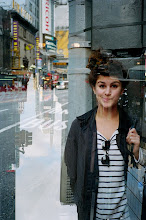Spaces for your imagination
Concrete memorial for those who died in the Hollocaust, also considered an urban playground in Berlin.Though the ‘creative use of urban space’ today usually suggests graffiti and skateboarding, it is not a modern concept.
The French were early pioneers and from the late 1700s it has been recorded that Parisians started exploring and making use of the underbelly of their city.
Apart from the sewers, or the ‘quarries’ of Paris, through which it is possible to walk the whole city, there is another underground adventure that continues to entice – the catacombs.
The catacombs were essentially a mass of underground caves for those whose families could not afford a traditional burial.
The underground graveyards have formed over the last 200 years and bones and skulls create walls and tunnels that the public can now walk through.
However, before opening to the general public, groups of Parisians, known as 'cataphiles', would illegally venture below ground to explore and even temporarily live.
Trespassers
Evidence of illegal trespassing are still found and the enigmatic culprits are often untraceable.
Books and films have been based on such ‘infiltrators’ and have whole websites dedicated to the exploration of abandoned and forbidden urban territory, inviting people to see evidence of their conquests.
More recently, in 2004, an underground cinema and restaurant was found in a previously undiscovered cavern.
It was equipped with electricity and phone lines, and on the floor was a note reading "do not try to find us."
Police could not work out the culprits and they concluded that it was a sect or secret society.
Media attention has brought urban exploration and the interesting use of city landscapes to the mainstream.
Films like Man on Wire are an example of extreme ways to make use of the cities and the environments within.
But Paris is a city that now often legally uses its environment to the best of its ability.
No walls, no barriers
Manmade urban beaches are a popular attraction in the summer, as they are in other cities such as London.
Small patches of land are sometimes transformed into examples of different environments.
Behind Notre Dame is a square that often adopts a theme.
One year it might be a beach and the next a botanical garden - no walls or no barriers.
A spot popular with Parisians and tourists alike is le pont des arts, a pedestrianised bridge over the Seine, where families and groups of friends go to picnic, booze and be merry.
A far cry from how we use the Millenium Bridge in London.
The trend for using cities for more than just going to work and shopping has caught on worldwide.
The urban landscape is now seen as a platform for art.
Berlin is a city full of contrasting architecture and wall art but in 2005 another attraction emerged.
Its Jewish memorial, designed by architect Peter Eisenman and engineer Buro Happold, comprised of hundreds of concrete slabs, was criticised for being too abstract, among other things, but is now a surreal and symbolic work of art to all who visit.
Though it is built in the memory of those who died during the Holocaust, visitors innocently use it as a playground for hide and seek or jumping from block to block.
Art installations are popular in cities often because they easily steal attention from the normality of a city street.
A blank concrete canvas is often perfect for an artist’s vision.
Urban Play
Two years ago in Amsterdam a project called Urban Play saw graphic designer Stefan Sagmeister spelling out one of his philosophical phrases, "obsessions make my life worse and my work better", using 250,000 pennies.
Part of the project was to see how the artwork would change each day due to the public stealing a penny here or there. On the first night the police were alerted to someone doing just this and decided to remove the entire artwork to "preserve" it.
Apart from the arty ideas for the city landscape there are those with a more practical function.
China’s Olympics-inspired idea for an outdoor gym is catching on so well that there is even one in Peckham Rye park.
For adventure, practicality, or for aesthetic reasons, city landscapes continue to be used in new and innovative ways and it is impossible to second guess what will come next.
http://www.artslondonnews.co.uk/20100211-urbanspace-imagination-history

No comments:
Post a Comment